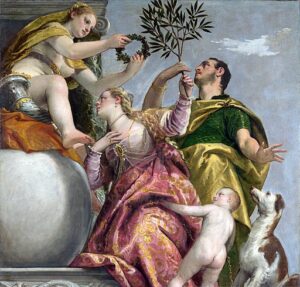 This day-school introduces the visual vocabulary and attributes used by painters in the 16th Century. The first illustration will be Bronzino’s “Allegory with Venus and Cupid” (c.1550). We will then consider other examples of allegory, particularly Hans Eworth’s strange portrait of “Sir John Luttrell” (c.1550) and and Veronese’s four “Allegories of Love” (c.1575).
This day-school introduces the visual vocabulary and attributes used by painters in the 16th Century. The first illustration will be Bronzino’s “Allegory with Venus and Cupid” (c.1550). We will then consider other examples of allegory, particularly Hans Eworth’s strange portrait of “Sir John Luttrell” (c.1550) and and Veronese’s four “Allegories of Love” (c.1575).
From Bosworth Field to the Spanish Armada, the Tudors changed the world. We look at the art of the period, from Bronzino’s famous nudes to Hilliard’s exquisite miniatures.
The rest of the course will focus on politics and art, from issues of censorship through to state-sponsored propaganda. We begin with the Tudor portrayal of Richard III in art and literature.
That will take us onto the Tudor insistence on their right to rule (with some architectural nervousness at Bath Abbey and King’s College, Cambridge). Includes a case study of the work of Hans Holbein at the court of Henry VIII, particularly his masterpiece “The Ambassadors” (1533).
